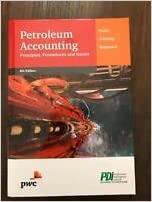







Required information (The following information applies to the questions displayed below.) At the beginning of Year 2, the Redd Company had the following balances in its accounts: Cash Inventory Land Common stock Retained earnings $14,300 6,500 3,400 12,000 12,200 During Year 2, the company experienced the following events: 1. Purchased inventory that cost $12,600 on account from Ross Company under terms 2/10, n/30. The merchandise was delivered FOB shipping point. Freight costs of $940 were paid in cash. 2. Returned $650 of the inventory it had purchased from Ross Company because the inventory was damaged in transit. The seller agreed to pay the return freight cost. 3. Paid the amount due on its account payable to Ross Company within the cash discount period. 4. Sold inventory that had cost $11,000 for $19,000 on account, under terms 2/10, n/45. 5. Received merchandise returned from a customer. The merchandise originally cost $1,900 and was sold to the customer for $2,500 cash. The customer was paid $2,500 cash for the returned merchandise. 6. Delivered goods FOB destination in Event 4. Freight costs of $830 were paid in cash. 7. Collected the amount due on the account receivable within the discount period. 8. Sold the land for $6,300. 9. Recognized accrued interest income of $400. 10. Took a physical count indicating that $4,500 of inventory was on hand at the end of the accounting period. (Hint: Determine the current balance in the inventory account before calculating the amount of the inventory write down.) c. Post the beginning balances and the events to the T-accounts. Note that these ledger accounts will also be used when posting the closing entry that is created in Part e. Cash Merchandise Inventory Beg. Bal 7b. 14,300 18,620 Beg. Bal 1a. 12,600 940 8. 6,300 1b. 940 1b. 11,711 3b. 2,500 5a. 830 6. 650 2. 239 3a. 11,000 4b. 5b. 1,900 End. Bal 23,239 End. Bal Bal 3,551 5,551 10. 2,000 Accounts Receivable Interest Receivable Beg. Bal Beg. Bal 9. 4a. 19,000 400 380 7a. 18,620 7b. End. Bal End. Bal 400 Accounts Payable Land 3,400 Beg. Bal Beg. Bal 2. 3,400 8. 650 12,600 1a. 3a. 239 3b. 11,7111 End. Bal End. Bal Common Stock Retained Earnings 12,200 Beg. Bal 12,000 Beg. Bal End. Bal 12,000 End. Bal 12,200 Sales Revenue Cost of Goods Sold Beg. Bal 5a. 19,000 4a. Beg. Bal 4b. 10. 2,500 380 1,900 5b. 11,000 5,551 7a. Bal 16,120 Bal 14,651 cl. 16,120 14,651 cl. Transportation-out Interest Revenue Beg. Bal Beg. Bal 16 830 400 9. cl. 400 Bal 830 Bal 830 cl. Gain on Sale of Land Beg. Bal 2,900 8. cl. 2,900 Bal d. Prepare a multistep income statement, a statement of changes in stockholders' equity, a balance sheet, and a statement of cash flows for year 2. (Statement of Cash Flows only, items to be deducted must be indicated with a minus amount.) REDD COMPANY Income Statement For the Year Ended December 31, Year 2 Net sales Cost of goods sold Gross margin Operating expenses Transportation-out 0 0 Operating income Nonoperating items Interest revenue Gain on sale of land Net income 0 REDD COMPANY Statement of Changes in Stockholders' Equity For the Year Ended December 31, Year 2 Beginning common stock Plus: Stock issued Ending common stock $ Beginning retained earnings Plus: Net income Ending retained earnings Total stockholders' equity $ $ 0 0 0 REDD COMPANY Balance Sheet As of December 31, Year 2 Assets Cash Merchandise inventory Interest receivable $ 0 Total assets Liabilities Stockholders' Equity Common stock Retained earnings 0 Total stockholders' equity Total liabilities and stockholders' equity $ 0 REDD COMPANY Statement of Cash Flows For the Year Ended December 31, Year 2 Cash flow from operating activities $ 0 Net cash flow from operating activities Cash flows from investing activities Cash flows from financing activities 0 Ending cash balance $ 0 e. Use a single general journal to close all revenue, gain, and expense accounts to the retained earnings account. Post the journal entry to the ledger accounts created in Part c and prepare a post-closing trial balance. (If no entry is required for a transaction/event, select "No journal entry required" in the first account field.) View transaction list View journal entry worksheet X No Date General Journal Debit Credit 1 Dec 31 Sales revenue Interest revenue Gain from sale of land Cost of goods sold Transportation-out Retained earnings Credit REDD COMPANY Post Closing Trial Balance December 31, Year 2 Account Titles Debit Cash Merchandise inventory Interest receivable Common stock Retained earnings Total $ 0 $ 0














